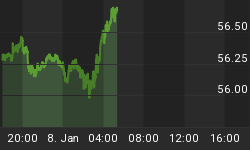American brick-and-mortar retail has been having a tough time for the past three years, and the pandemic might just finish it off altogether, turning physical stores into nothing more than “fulfillment” centers. In the early 2010s, in the aftermath of the Great Recession, several large retail chains announced plans to shutter dozens of stores. It was expected that the industry would bounce back in a few years; yet, the retail apocalypse showed no sign of recovering.
In 2017, retailers shuttered a record-breaking 8,000 stores of 102 million square of feet of store space. Then, 2018 proved far worse, with another 155 million square feet of space shut down. And still, that staggering rate of store closures that rocked the retail industry was nothing compared to 2019, when retailers set a new record for store closings at over 9,000.
As usual, online retailers are first to blame for the brick-and-mortar collapse in the US, and in the case of pandemic, they really are.
Back in 2018, e-commerce sales accounted for 14.3% of retail sales, compared to the less than 9% in 2017.
COVID-19 solidified a trend that was already in motion.
As of early April, e-commerce sales from online-only retailers are up 34% year over year in the US, and the number of orders has increased 52% year over year.
But then again, for retailers that are mostly store-based, online sales have increased 14% year over year and the number of orders has increased 32% year over year.
Non-essential retailers have been either shut down or reliant solely on eCommerce to bring in any sales.
The pandemic has put pressure on many retail stores, leading to the rise of the dedicated fulfillment centers, otherwise known as “dark stores’. It started with grocery stores and has expanded to others.
Bed Bath & Beyond said last week that roughly 25% of its stores in the US and Canada would be turned into fulfillment centers--temporarily, they hope. A number of fashion brands are also converting their stores to fulfillment centers to provide faster deliveries.
Related: Trump Tweet Sends Oil Soaring 25%
With 97% of the US population currently under a stay-at-home or shelter-in-place orders, and businesses still shut down with no clear idea as to when they will gradually reopen, state by state, even the once-profitable are sinking.
Will they be able to recover? Maybe. But the best chance of recovery is for those who firmly grasp an online aspect to their business. Only the digital will likely survive.
Macy’s has furloughed more than 100,000 workers. Kohl's, JCPenney and Nordstrom have temporarily closed all of their stores and put their workers--about 300,000 people--on furlough. Combined, $12.3 billion has been wiped from the market caps of those companies since the start of this year.
JCPenney announced that it elected not to make a $12 million interest payment due and payable on April 15th, while jeans maker True Religion and luxury department store Neiman Marcus have filed for Chapter 11.
According to a survey by the National Bureau of Economic Research, just 30% of thousands of small businesses surveyed expect to survive a lockdown that lasts four months.
That doesn’t sound comforting since the White House’s coronavirus task force coordinator Deborah Birx just said that some form of social distancing would probably remain in place through the summer. No one knows exactly what that means, and messages coming out of the White House have been contradictory at best.
Now, even though states’ are working on reopening the economy in the coming weeks, it is hard to say when all businesses will be reopened. It is also hard to say when customers will feel comfortable enough to roam the stores and malls again for anything that isn’t essential.
It’s also hard to say whether the customers will even feel the need to get back out onto the shopping streets when they’ve grown used to ordering online with few drawbacks.
If there was ever a brilliant advertising campaign for online retail, it was a pandemic, the final nail in the brick-and-mortar coffin.
By Josh Owens for Safehaven.com
More Top Reads From Safehaven.com:

















